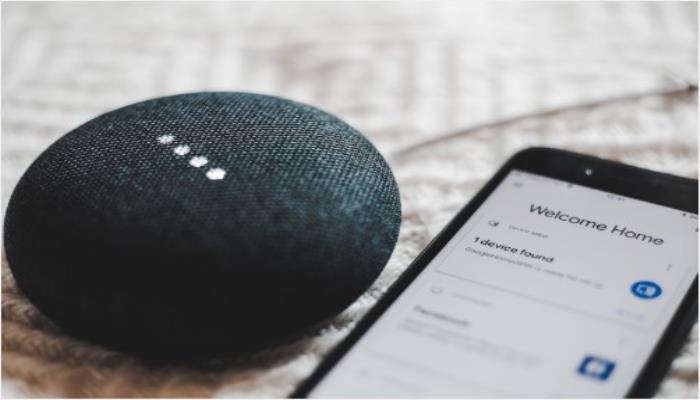From Fitness Trackers to Smart Homes: The Rise of the Connected Lifestyle

In the current epoch, our existence is entwined not only with physical reality but also with a digital sphere that follows us into every aspect of our lives. This connubial relationship between the real and the digital has given rise to what we popularly call the ‘connected lifestyle.’
From the moment we put on our fitness trackers to monitor our morning run, all the way through the convenience of smart home technology elucidating our evenings, the day-to-day experiences are now irrevocably intertwined with digital connectivity. But what does this mean for us and where is this trend headed?
Meanwhile, another way to add some fun to your lifestyle is to play online table games. That said, let’s dig in…
Definition and Significance of the Connected Lifestyle Trend
The connected lifestyle is more than just convenience; it is a shift in the way we interact with technology and how it becomes an integral part of our being. The ability to sync our smartphones with our kitchen appliances, to monitor our homes from afar, and the gamut of other personal applications turn the concept of living on its head.
To start, the essence of the connected lifestyle embodies seamless interconnectivity – devices aren’t just singular entities anymore; they are nodes in a vast web that enables a multitude of actions. This trend is about being constantly in the loop, armed with personalized data that cater to our every need – and it’s incredibly significant.
It is altering consumer preferences and expectations, driving innovation in product development, and even transforming traditional living spaces into smart ecosystems that anticipate and accommodate our every desire.
But as we celebrate these advancements, it’s essential to note that the dependency on connectivity isn’t without its caveats. Privacy concerns, data security failures, and the gradual erosion of offline time all give us pause. The challenge of the connected lifestyle, then, is not just to revel in its perks, but to critically evaluate and balance its pros and cons.
Evolution of Fitness Trackers
Let’s jog through the evolution of fitness tracking and see how it exemplifies the connected lifestyle. Once upon a time, we merely strapped on pedometers to count steps. Now, the modern fitness tracker goes beyond mere counting; it logs our sleep patterns, analyzes our workouts, and can even remind us to hydrate. It’s no longer just about the number of steps but about nurturing a holistic approach to well-being.
The integration of fitness trackers with smartphones and smartwatches has been seamless. They have become part of the daily routine, serving reminders and motivating individuals to stay active and healthy. This evolution is not just about a change in design, but a change in behavior as we become more mindful of our health, thanks to the omnipresent and adaptive technology.
Integration with Smart Home Technology
Connected lifestyles have seeped into the very walls of our homes. Smart home technology, with the likes of voice-activated assistants and automated systems, offers unprecedented levels of control and comfort. Gone are the days of scrambling around to turn off lights or set the thermostat; now, it’s all managed with a verbal command or a swipe on a smart device.
The significance of this is profound – it’s not just about luxury, it’s about energy conservation and the ease of multitasking. The refrigerator that sends you a grocery list, the sound system that tunes to your evening playlist as soon as you step through the door, and the home security that you can check on from the office, are all part of a harmonious choreography that’s both enchanting and, some may argue, somewhat unsettling.
Benefits of a Connected Lifestyle
There’s a compendium of perks associated with the connected lifestyle. Increased efficiency, personalized experiences, and a level of control that was previously unimaginable are all at the forefront. The ease with which we can organize our lives, the ability to learn and grow through personalized content, and the productivity that smart technology affords in both work and play are all evident benefits.
The sheer volume of data collected through these devices is being utilized to tailor-make experiences. Our smart devices learn our preferences and modify their behavior to suit our needs, be it suggestions on what to watch next, creating comfortable home environments, or even prompting us with tasks and reminders.
This personalization enhances the user experience, making technology all the more endearing and embedded into our lives.
Challenges and Concerns
With great power, as they say, comes great responsibility. The ecosystem of interconnected devices is vulnerable to security breaches, and our dependency could lead to issues if systems were to fail. Not to mention the perplexing moral and ethical questions surrounding data privacy. How much is too much? And who has access to the information our devices collect?
Additionally, there is a growing concern about the erosion of ‘downtime.’ The constant engagement with devices can have cognitive and emotional repercussions, leading to burnout and a persistent feeling of being ‘switched on.’ It is important to assess and moderate our engagement to maintain a healthy balance in life.
Future Trends in Connected Living
Looking to the horizon, the connected lifestyle is poised for even more impactful integration. Artificial intelligence (AI) and the Internet of Things (IoT) are the prime movers, promising smarter, more intuitive interactions.
Homes will become even more automated, with predictive maintenance on appliances and systems. Our fitness trackers will likely become more sophisticated, taking advantage of AI to provide personalized health advice and even perform early detection of health issues.
The rise of sustainability and green living will also play a pivotal role. Smart devices will not only enhance our convenience but also help to monitor and reduce our environmental footprint. The future of connected living is one of technology being a catalyst for positive change, not just in lifestyle enhancement, but in societal and environmental realms as well.



